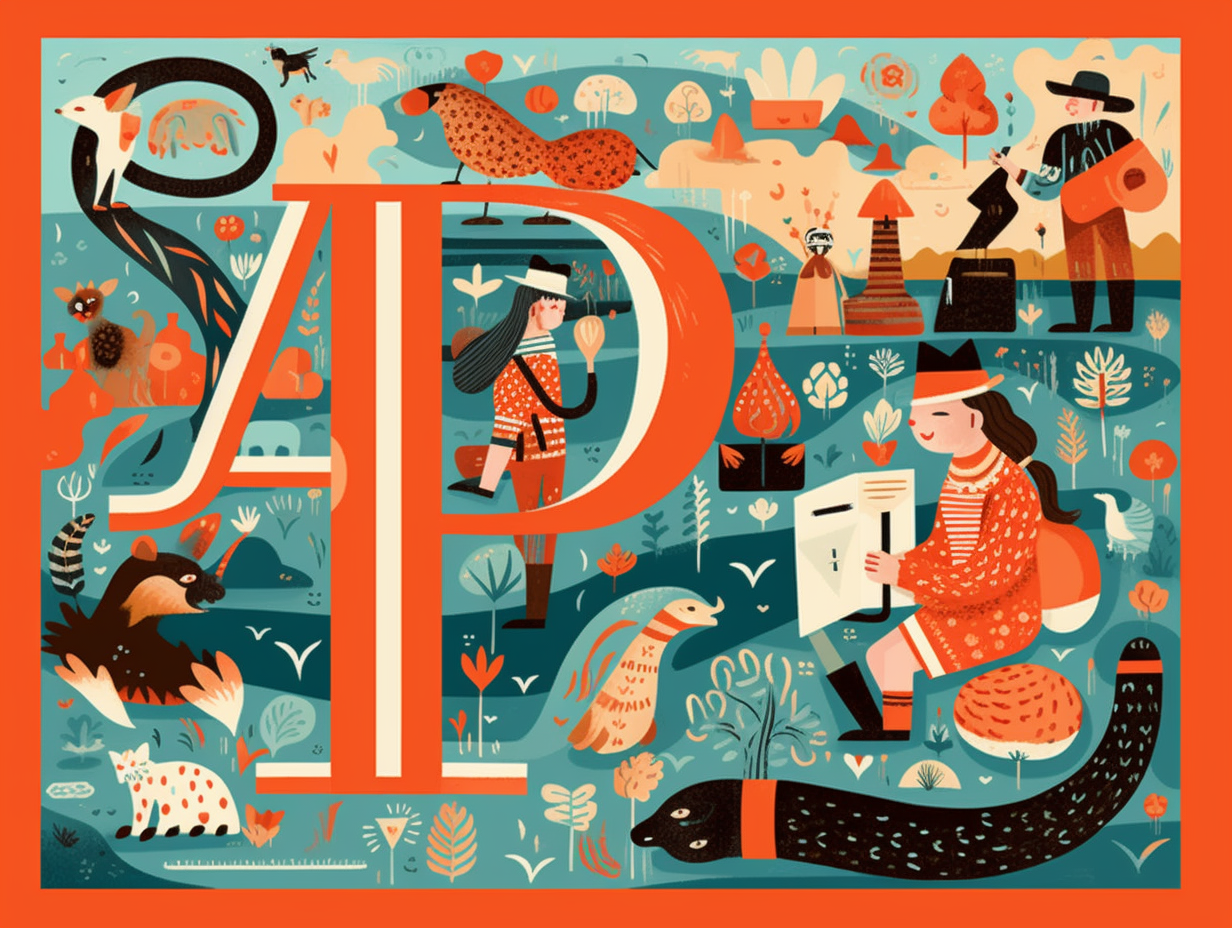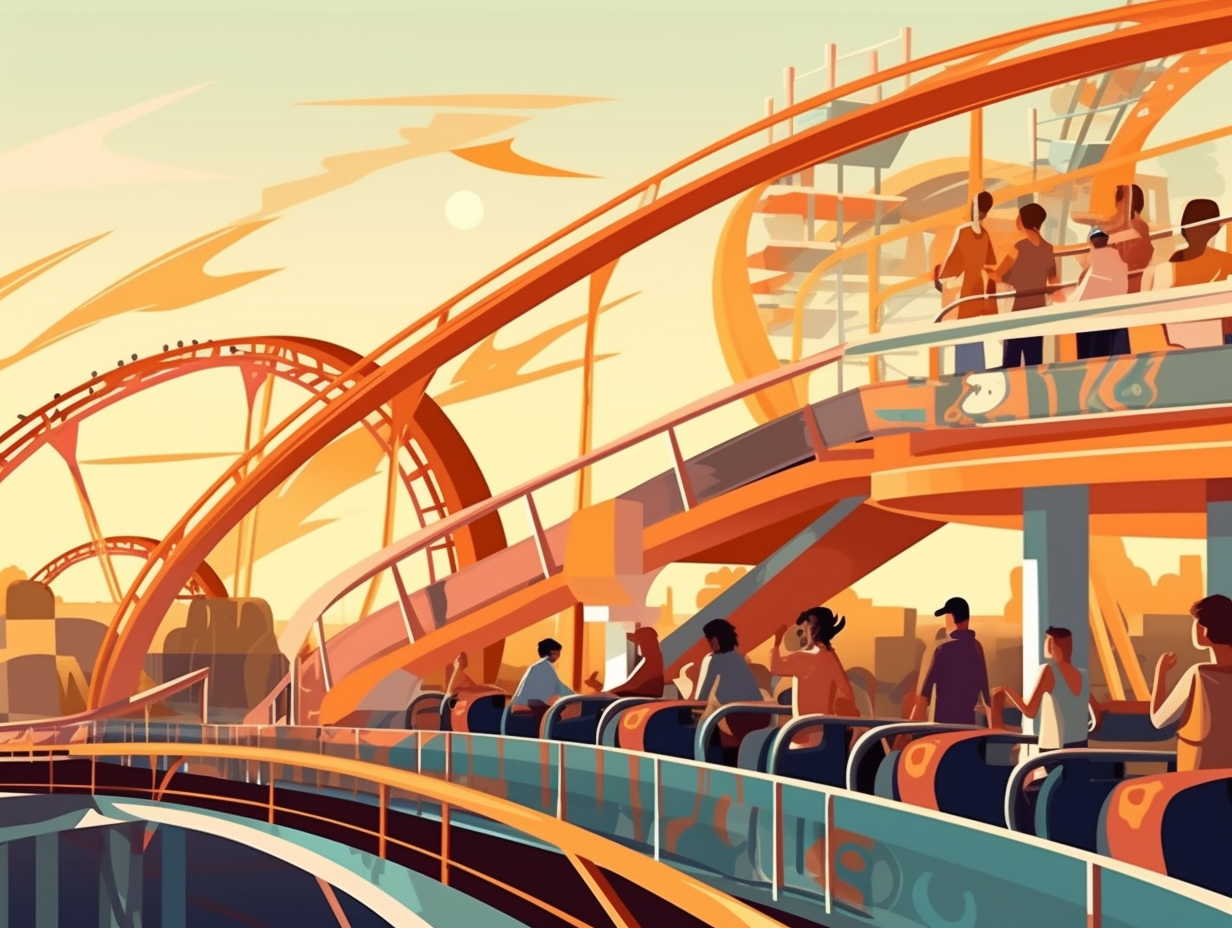Discover the A to Z: Top 11 Engaging and Surprising Fun Facts About the Alphabet

1. Phoenicians: Alphabet Influencers
Who knew that the Phoenicans were the original influencers of their time, making the alphabet go viral like a cat video on the internet? They practically had ancient people chanting "A, B, C!" in a multitude of languages: In reality, the Phoenician alphabet's simplicity and phonetic nature allowed it to spread far beyond the Canaanite languages, spawning several national alphabets such as Aramaic, Samaritan, various Anatolian scripts, and even early Greek alphabets, taking the Mediterranean world by linguistic storm.
Source => en.wikipedia.org
2. Ampersand: The Almost 27th Letter
Once upon a time, the English alphabet gained an unexpected tag-along, like a linguistic little sibling determined to hang out with its cooler elder letters: Behold the ampersand! Here comes the truth bomb: It was never officially the 27th letter but was commonly used instead of the word "and" and eventually became a symbol on its own. The name "ampersand" was born from 1800s school children slurring the phrase "and per se and" as they recited their ABCs, which over time, like a game of ancestral telephone, morphed into its modern moniker, "ampersand."
Source => dictionary.com

Did you know that a home's foundation can last up to 100 years? Discover the fascinating lifespans of various household materials and appliances as they serve as faithful minions to the abode. 🏠⌛💡
=> Fun Facts about Real-Estate
3. W's Nicki Minaj Makeover
Before the "W" went full-on Nicki Minaj with "double your pleasure, double your fun": The printing press aided in the evolution of this letter by initially using a double-U block, which eventually turned into a double-V shape (think VV), before finally morphing into the single continuous shape, "W" that we know and love today.
Source => dictionary.com
4. Alpha-Betting Thanks to Greece
Next time you're alpha-betting on your favorite horse or betting on a game of Beethoven's Ninth (Symphony in D minor), take a moment to thank our Greek pals: The English word "alphabet" is derived from the first two letters of the Greek alphabet - alpha and beta - and serves as a foundation for most modern European alphabets, including the Latin one used in English. Even letters like F (from digamma), Q (from koppa), U, V, and W have their unique, hilariously intertwined Greek-origin story.
Source => dictionary.com

5. Z's Alphabet Popularity Struggle
Feeling zzz-uper duper low on the popularity scale, Z staged a letter revolution and surprisingly toppled over a few of its alphabetical buddies: As it turns out, "Z" is the least common letter in the English alphabet, followed closely by "Q", "J", "X", and "K" due to their limited usage in everyday words, as well as their absence from many common prefixes and suffixes.
Source => thesaurus.com
6. Vowel-Free Dance Parties
Ever heard of vowel-free parties? It's the latest craze where words like "rhythm" and "flyby" shimmy on the dance floor, leaving their vowel friends green with envy: As it turns out, not all English words need conventional vowels for spelling; instead, they rock their vowel sounds using slick letter combos, such as "yh" or "y" to represent the sweet sound of "i". Now that's what you call a consonantal groove!
Source => dictionary.com
7. Y's Double Duty as Vowel and Consonant
Whoever said Y not have it all: Our versatile friend, the letter Y, is the only letter in the English alphabet that moonlights as both a vowel and a consonant, ready to shift roles whenever needed and keep our words looking and sounding fabulous.
Source => merriam-webster.com
8. Z's Sound-Stealing Friends
Z-econds, anyone? While Zorro may have popularized slicing the Z in midair, some letters and combos are having an undercover rendezvous to produce the same snazzy sound: Sneaky "S" and vivacious "se" and "ze" duos also play the /z/ tune in certain positions, out-Z-ing the good ol' alphabet's finale.
Source => thefreedictionary.com
9. Cursive Handwriting's Comeback
Step aside, autocorrect: It's time for the mighty ink-slinging weapen of days gone by, cursive handwriting, to have its well-deserved, gallant comeback! Believe it or not: Research supports that cursive can significantly improve older children's spelling and composition skills, and even assist those with dyslexia in reading and writing. Moreover, brain scans show neural fireworks when kids first print letters and then read them, proving that handwriting creates a unique brain buzz unlike typing or tracing. So, let's raise a toast to the swirls and curls, as some schools bring back this eloquent art despite its waning presence in our tech-driven world.
Source => edutopia.org

10. Romans Swipe Right on V and U
The Romans had commitment issues when it came to their letters, playing a sort of Ancient Roman Tinder with a V that couldn't decide whether to swipe U or V: In Classical Latin, the alphabet originally had no distinct symbols for "U" or "V" – they shared the same V-shaped symbol, as did "I" and "J," which simply relied on one letter for the two sounds.
Source => textkit.com
11. Vowels' Great Shift Road Trip
Before vowels had GPS, they went through the Great Vowel Shift: a linguistic road trip that changed the way English pronunciation sounded between the 15th and 18th centuries. It shuffled the Middle English long vowels' values and left some consonants mere hitchhikers as silent sounds. The ride eventually led to the delightful inconsistencies between English spellings and pronunciations we trip over today – all without adding any new letters to the alphabet!
Source => en.wikipedia.org
Related Fun Facts




















